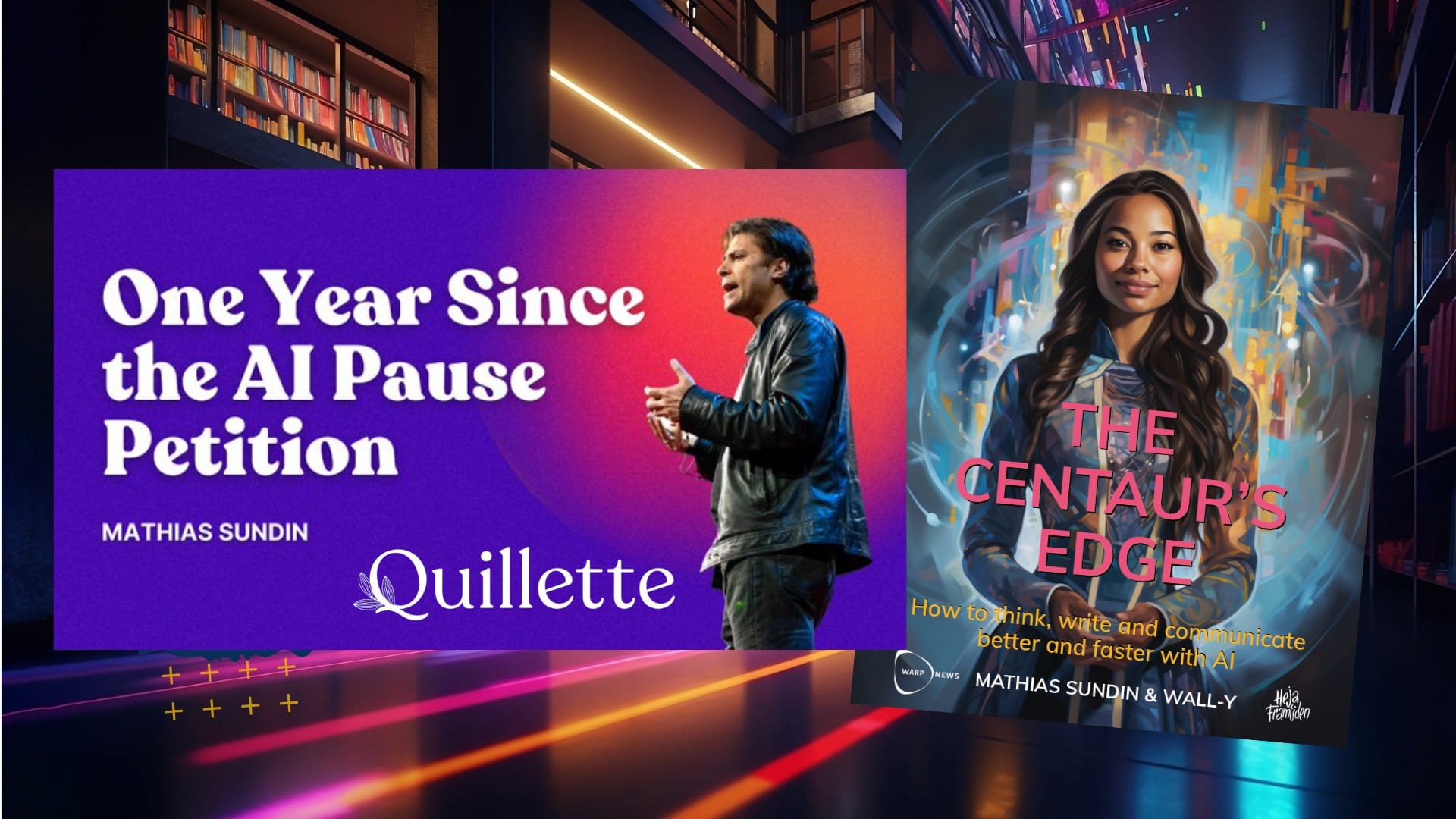
🚴 "We are tool builders," said Steve Jobs
A bicycle for the mind, Steve Jobs said of the computer. AI is the motorcycle. EXCERPT FROM THE NEW AI BOOK "THE CENTAUR'S EDGE"
Share this story!
Excerpt from "The Centaur's Edge – How to Think, Write, and Communicate Better and Faster with ChatGPT". Out soon.
Steve Jobs often recounted how he, as a boy, read an article in Scientific American that compared the energy efficiency of different animals in movement.
“I think one of the things that really separates us from the high primates is that we’re tool builders. I read a study that measured the efficiency of locomotion for various species on the planet. The condor used the least energy to move a kilometer. And, humans came in with a rather unimpressive showing, about a third of the way down the list.
It was not too proud a showing for the crown of creation. So, that didn’t look so good.
But, then somebody at Scientific American had the insight to test the efficiency of locomotion for a man on a bicycle. And, a man on a bicycle, a human on a bicycle, blew the condor away, completely off the top of the charts.
And that’s what a computer is to me. What a computer is to me is it’s the most remarkable tool that we’ve ever come up with, and it’s the equivalent of a bicycle for our minds.”
A bicycle for the mind. That's how he viewed the computer.
Without a tool, like a stone axe, the human hand is not very effective at breaking things. With our bare hands, we are no match for many wild animals. Technology compensated for our weaknesses and created new opportunities for mankind.
Today, when we talk about technology, we often think of computers, smartphones, robots, or perhaps machines in a factory. But technology also includes everything we use to manage tasks our bodies or minds can't handle as well, or at all, on their own.
A problem with personal computers, and all machines, is how you instruct them. Many of their functions need to be programmed, and this requires learning specific programming languages.
In the early personal computers, one had to type commands, just to get them to do anything:
C:\dir
C:\defrag
C:\format e:
This brings back old memories! My dad worked at Xerox and in the 80s hauled home loads of computers. "Hauled" is the right word – they were heavy, unwieldy pieces.
Learning commands was complicated, it was difficult to get an overview of where files were, and something was always going wrong. Back then, there was no internet to search for information. Part of this problem was solved by the company where my dad worked. Xerox, for a number of years, held patents, and thus a monopoly, on photocopiers.
They made a lot of money, some of which was spent on a development department in Palo Alto, which was one of the first components of what is now known as Silicon Valley. Xerox PARC developed the first personal computer, the Xerox Alto, with a screen, keyboard, and mouse. It used a graphical user interface, with windows and buttons you could click on. This provided a completely different overview and ease of control compared to text commands.
The problem with the Xerox Alto was that it was extremely expensive, so only a few thousand were made, most of which were used by Xerox themselves. At PARC, they liked to show them off, and one visitor was Steve Jobs. For Jobs, they demonstrated three different innovations, but he barely remembered the other two, because the first thing he saw was the graphical user interface.
"I was so blown away by the first thing they showed me, which was the graphical user interface," said Jobs later.
"I thought it was the best thing I'd ever seen in my life. And within 10 minutes it was obvious to me that all computers would work this way someday."
Apple developed the concept and invented, among other things, clickable icons.
Another visitor to Xerox PARC was Bill Gates. He, too, was impressed by the graphical user interface and "borrowed" it, which became Microsoft Windows.
The graphical user interface made it much easier to control and use the computer and has greatly contributed to not only computers but also smartphones becoming so widespread. Despite this, as mentioned, you still need to learn specific programming languages if you want the computer to do something it can't already do. The graphical user interface is good for easily controlling what's already there, but creating something new immediately becomes complicated.
Time for the next step, then.
Now, we can control machines with our natural language
The next step is to control computers and machines with our natural language. The language that has been with us for a hundred thousand years, which has been so crucial for human progress. That's what we can do now with ChatGPT, Midjourney, and other tools within generative AI.
Sure, we're still writing some sort of commands, like in the 70s and 80s, but it's not C:\dir, it's our everyday language. You instruct ChatGPT in the same way you write an email to a colleague asking them to do something. That is a significant breakthrough.
Had computers continued to be command-based, their impact would have been much smaller, and we wouldn't have smartphones today. The graphical user interface meant that ordinary people, without a special interest in computers, could use them. Now, to control them and get the computers to create through our natural language, expands the circle of those who can use them. I can't program and know very little about how programming works. Despite this, I can now program, and on my computer, there's a little game that I created. Or − I didn't program it, I asked ChatGPT to.
This book, by the way, is written in collaboration with the AI bot WALL-Y, created through ChatGPT. Some chapters I've written myself, but with input and feedback from WALL-Y. Some chapters WALL-Y wrote on her own, at my instruction. In some chapters, I wrote parts and WALL-Y different parts. It's faster, better, and there are some things in the book, I simply couldn't have come up with without spending hundreds of hours. Now, with WALL-Y it takes minutes.
Considering how crucial spoken and written language has been for the progress of humanity, it's a significant breakthrough that we can now use that language to instruct computers what to do.
Therefore, generative AI will unleash a massive wave of human creativity.
Mathias Sundin
The Angry Optimist
Excerpt from "The Centaur's Edge – How to Think, Write, and Communicate Better and Faster with ChatGPT". Out soon.
By becoming a premium supporter, you help in the creation and sharing of fact-based optimistic news all over the world.


